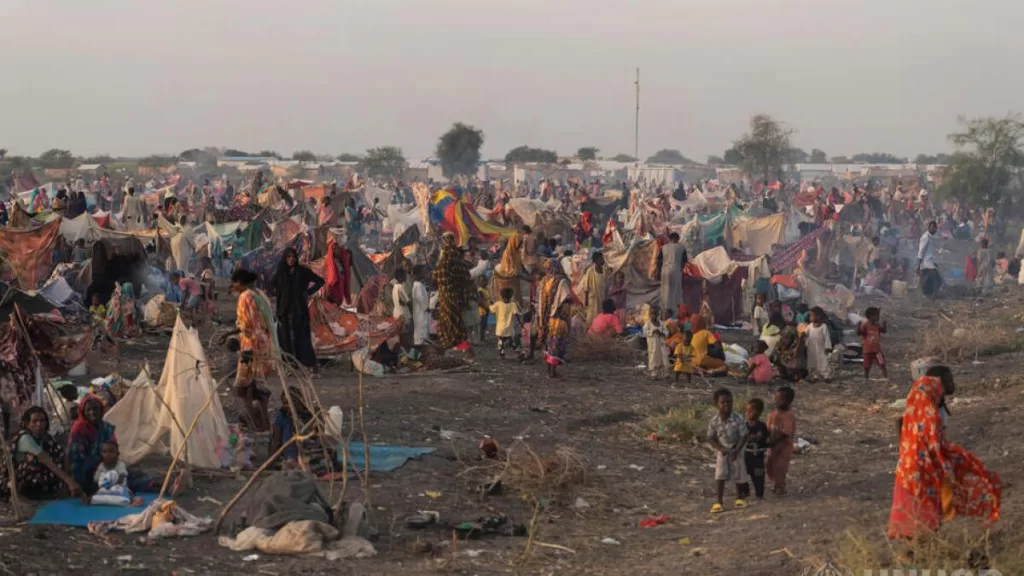A year since it started, the war in Sudan has spiralled into one of the world’s largest and most complex displacement crises. Since April 15, 2023, more than 8.6 million people have fled their homes, with 1.8 million people, mostly women and children, crossing to neighbouring countries.
Civilians suffer indiscriminate attacks – including widespread sexual violence. Communities are shattered, with families broken and separated or desperate to provide for those still in their care.
Youth have had their lives turned upside down, completely uncertain about the future. Sudan’s urban middle class is now nearly destroyed: architects, doctors, teachers, nurses, engineers, and students have lost everything.
Over the past 12 months, Ala Kheir, a Sudanese photographer, has worked with the United Nations High Commissioner for Refugees (UNHCR) to document the conflict and some of the lives it uprooted.
Witnessing devastation across the country, he was reminded of the atrocities seen during the 2003-2020 war in Darfur, where he was born.
“Through my photos, I hope that people at least engage with what’s going on,” he says.
“Those people who I photographed, I think if I can transfer their feelings across, I would at least have done something so that people elsewhere start to think about helping the Sudanese who are stranded in camps, schools, farms.
“Maybe, in the middle of all of this chaos and carnage, the parties to the conflict inside Sudan and abroad can start to think about solutions and interventions to help end this devastating war.”
Thousands are still crossing the borders. In South Sudan, more than 1,800 people arrive daily, increasing pressure on already stretched resources. Chad is experiencing the largest influx of refugees in its history.
Other countries hosting Sudanese refugees include the Central African Republic, Egypt, Ethiopia and Uganda. Host countries have been extremely generous in ensuring refugees can access public services, including documentation, education, healthcare and housing.
UNHCR and the World Health Organization (WHO) are warning of the worsening health situation as health facilities across Sudan struggle to cope due to shortages of staff, lifesaving medicine and critical equipment, exacerbating current outbreaks and causing unnecessary deaths.
In Sudan’s White Nile state, more than 1,200 refugee children under the age of five died in nine camps between May 15 and September 14, 2023, due to a deadly combination of a measles outbreak and high malnutrition.
There is also a heightened risk of a cholera outbreak as suspected cases have been reported in other parts of the country. Across the border in Renk, South Sudan, more children are arriving with measles and malnutrition among children below five years mainly from White Nile.
To support the work of UNHCR and its partners for the Sudanese people, see here.
